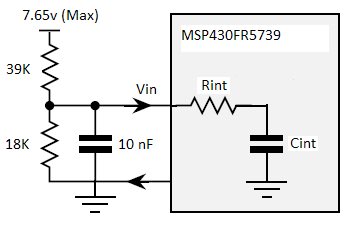Hello,
I don't really understand how many ADC10CLK cycles i should choose in the sampling period for the ADC10.
Most of the ADC10 examples choose ADC10SHT_2 = 16 cycles, so is this the case to use mostly or do you only set when using ADC10 in Pulse Sample Mode (section 16.2.5.2 in SLAU272)
I just want to sample a low DC voltage (< 5V).
Thanks
Michael Dalton


